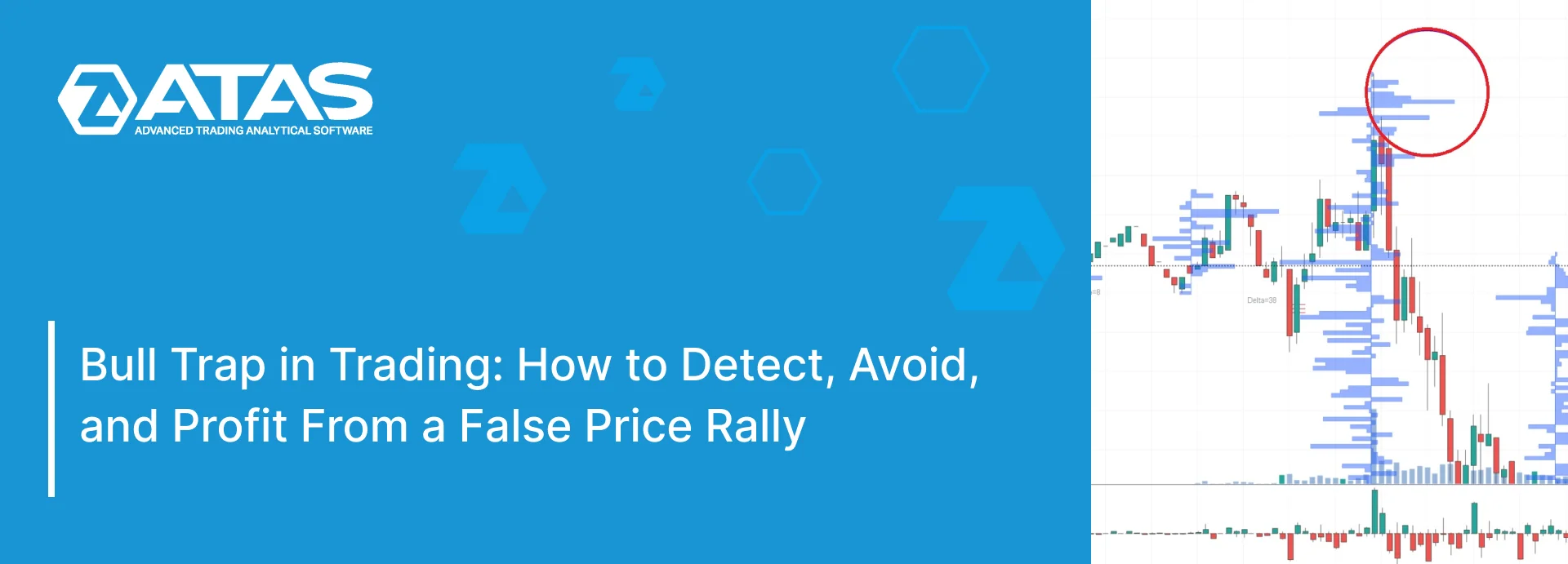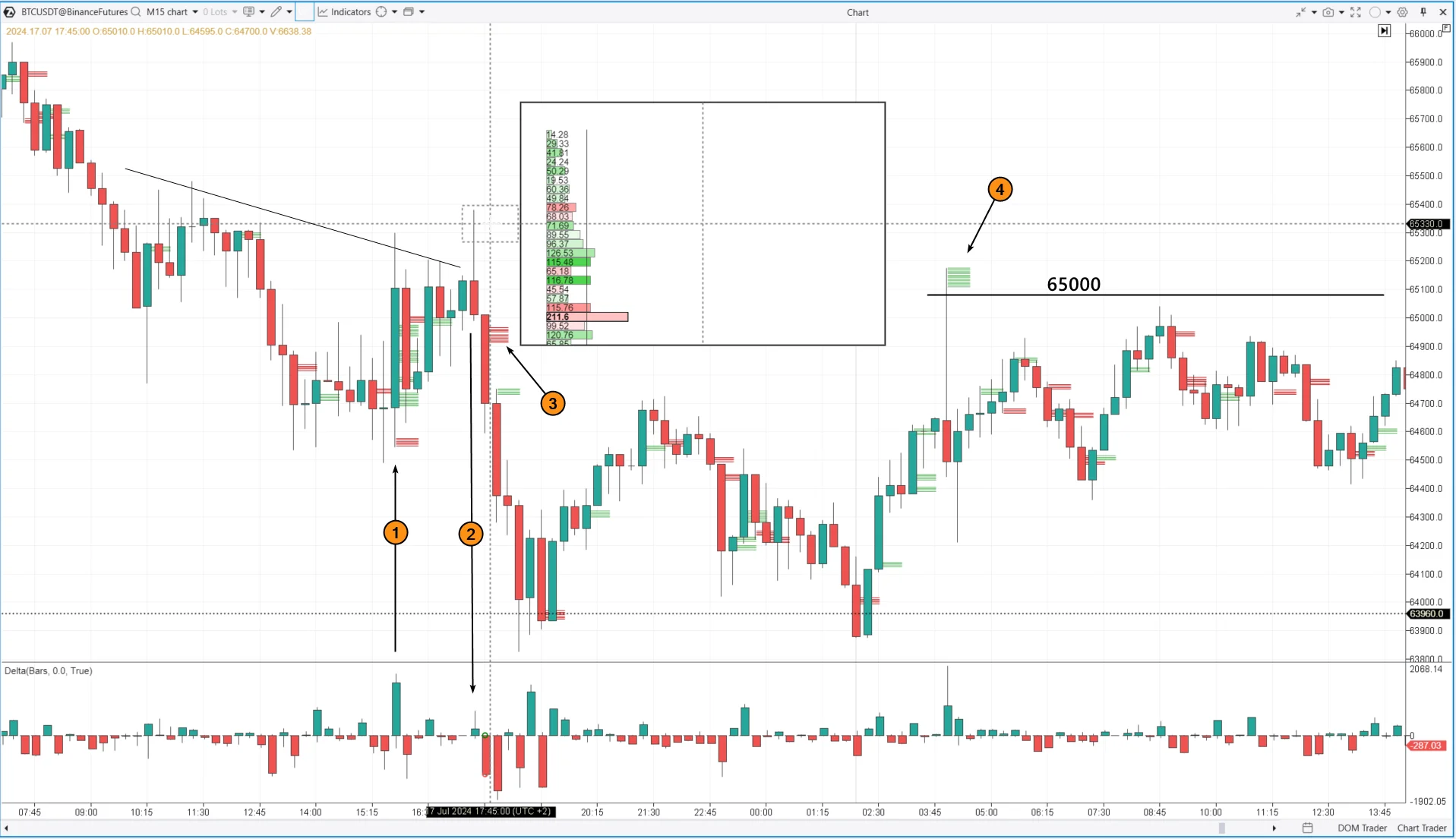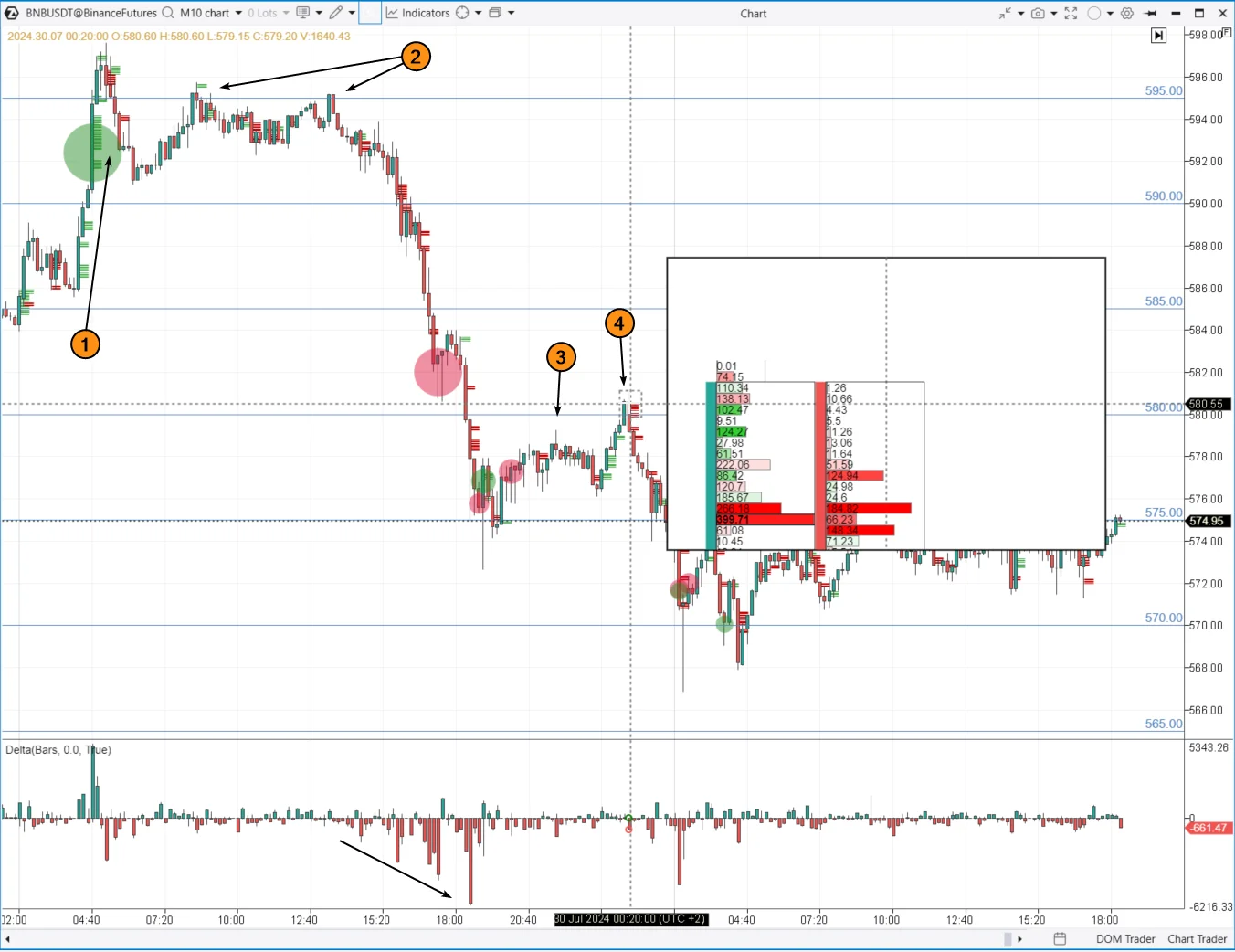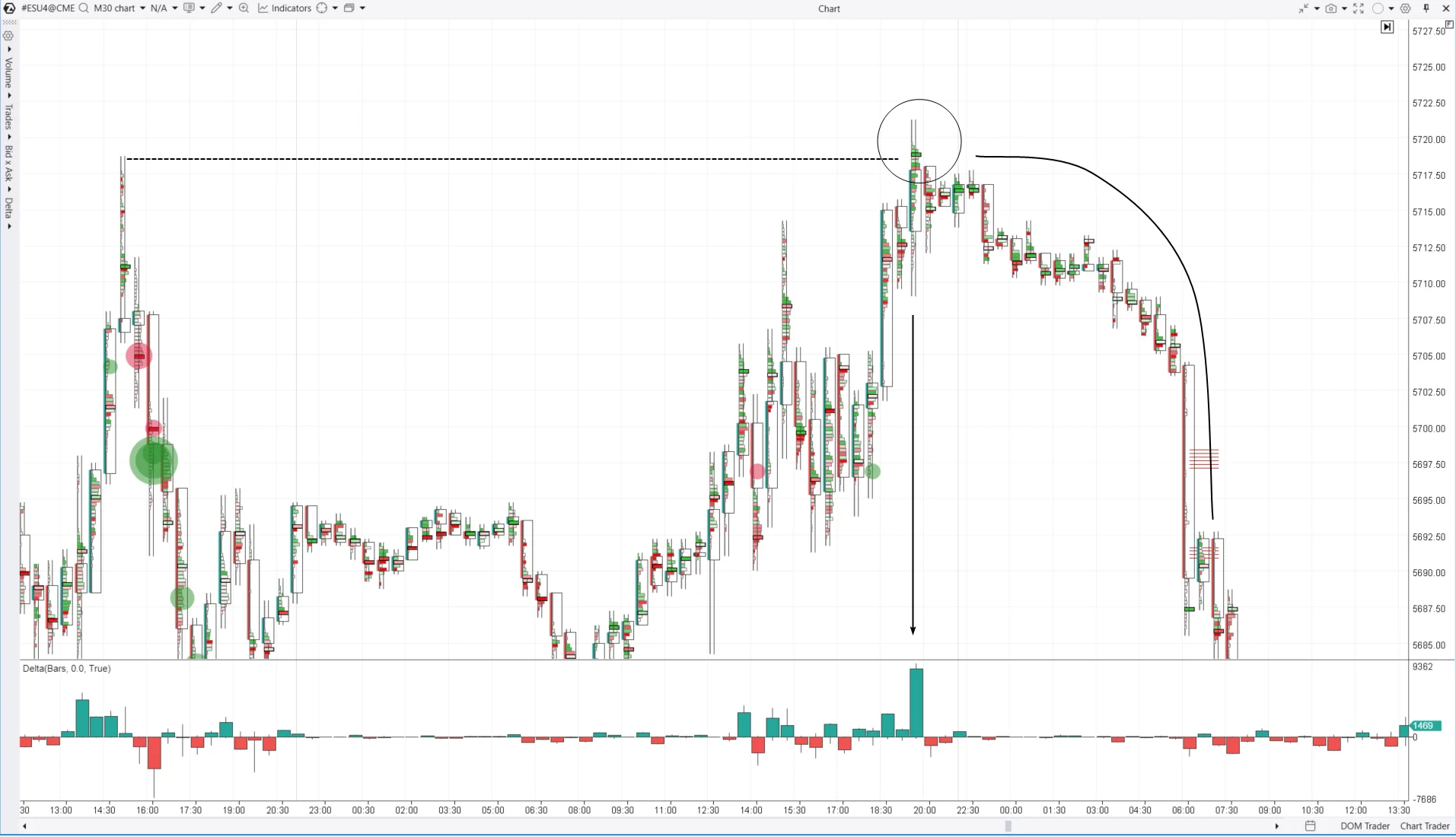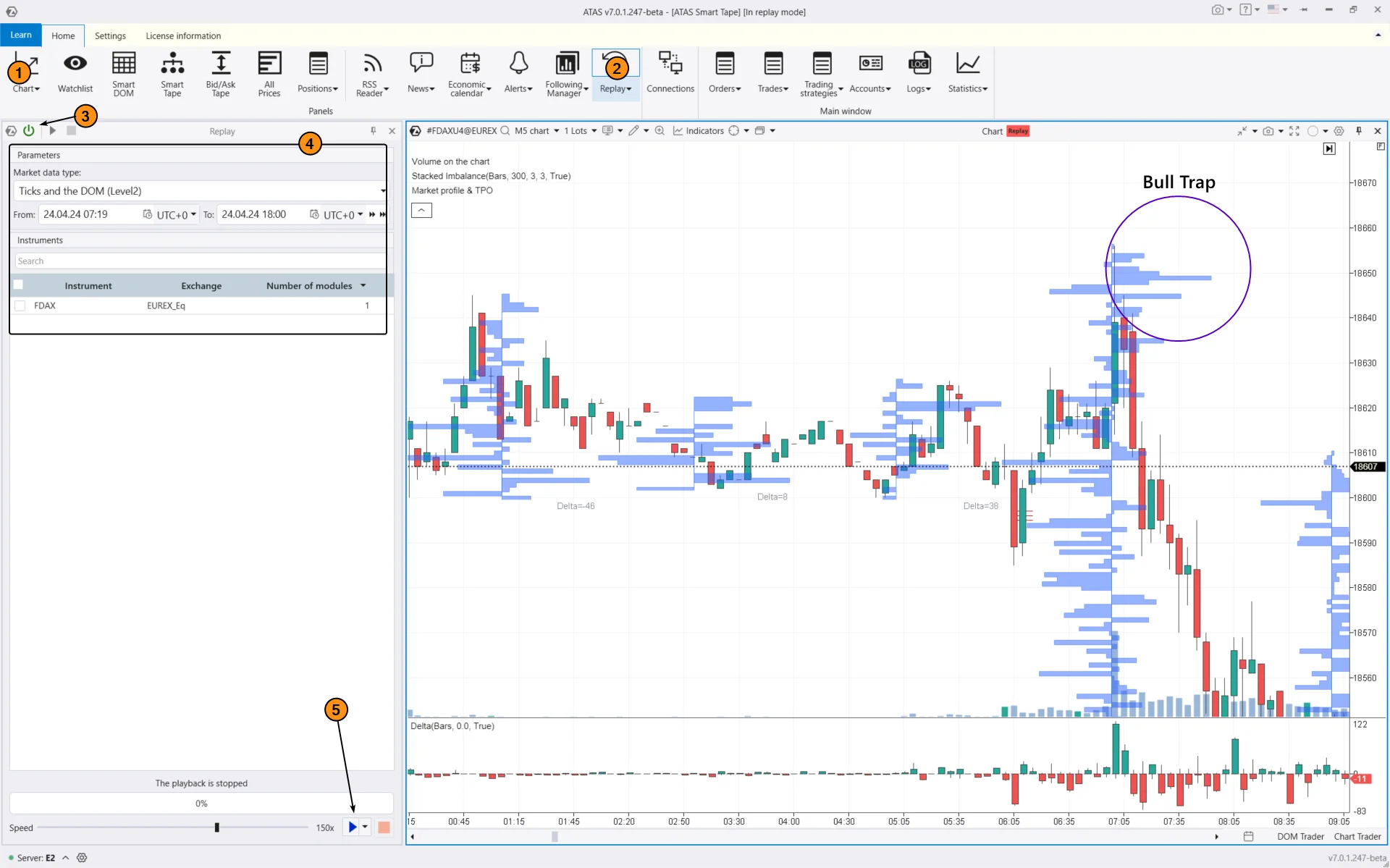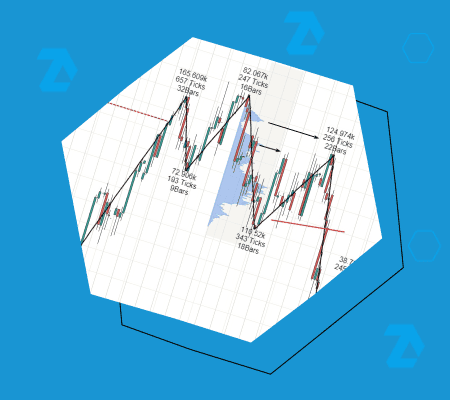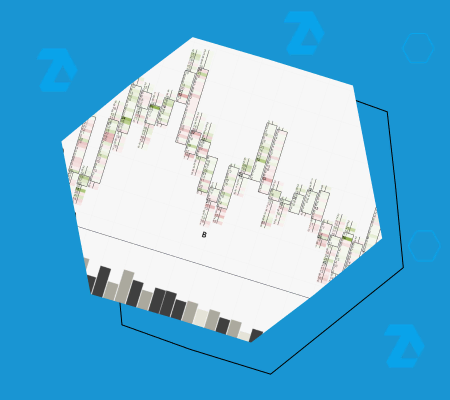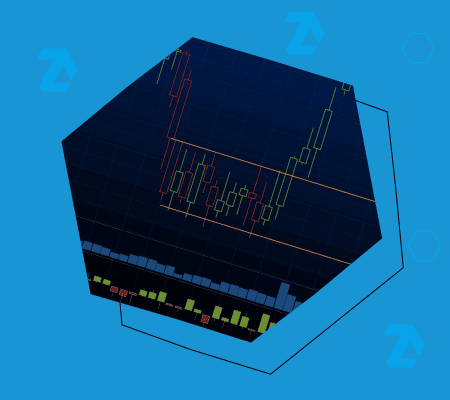(1) A sudden price spike attracted optimistic buyers. Notice the unusually high surge in positive Delta — this indicates the FOMO effect in trading.
(2) A lot of market buys occurred around the 20900 level, but the price closed below the bright green clusters. Technically, some buyers are already in losing positions — caught in the trap.
(3) Before the release of U.S. inflation news, the price, driven by rumors, moved upward, encouraging even more buyers to go long (and fall deeper into the trap).
(4) The news about U.S. inflation on July 11, 2024, dramatically shifted the price trend. The stock index plummeted, breaking the upward trendline. Traders with open long positions were forced to close them, selling contracts and further accelerating the downward movement. Extremely high negative Delta values indicate a significant shift in market sentiment over two days. Typically, the downward movement happens abruptly, “snapping” the trap shut and minimizing the chances for bulls to escape.
(5) This bull trap occurred when the price broke out above the previous high. Traders were buying, hoping for a continuation of the tech stock rally from the first half of 2024. Meanwhile, sellers’ stop-losses above 20750 were triggered.
(6) This is followed by an increase in market sells (as seen from the negative Delta). Part of these sells comes from those locking in losses after entering long positions (falling into the trap).
(7) Another example of a smaller trap.
A common feature of bull traps is that the closing of long positions acts as “fuel” for further downward movement. When buyers sell off their assets, it speeds up the price drop and helps it break through support levels.

